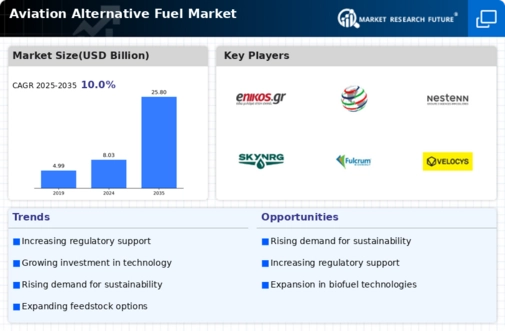Aviation Alternative Fuel Market Summary
As per Market Research Future Analysis, the Aviation Alternative Fuel Market is projected to reach USD 16 Billion by 2030, growing at a CAGR of 10% from 2022 to 2030. This market focuses on sustainable aviation fuels that reduce carbon emissions significantly compared to traditional fossil fuels. The COVID-19 pandemic has impacted the market, causing delays in production and a reduction in flight operations. However, the demand for sustainable aviation fuel (SAF) is driven by the aviation industry's commitment to reducing greenhouse gas emissions and meeting regulatory standards. The market faces challenges such as limited raw material availability and high production costs, but opportunities exist in the form of drop-in fuels that can utilize existing infrastructure.
Key Market Trends & Highlights
Key trends in the Aviation Alternative Fuel Market indicate a strong push towards sustainability and regulatory compliance.
- Market Size is anticipated to reach USD 16 Billion by 2030.
- CAGR of 10% projected from 2022 to 2030.
- SAF can reduce CO2 emissions by up to 80% over its lifecycle compared to fossil jet fuel.
- North America expected to grow at the highest CAGR during the forecast period.
Market Size & Forecast
| Market Size | USD 16 Billion by 2030 |
| CAGR | 10% from 2022 to 2030 |
Major Players
Major players include Eni (Italy), World Energy (US), Gevo (US), Neste (Finland), SkyNRG (Netherlands), Fulcrum Bioenergy (US), Velocys (UK), and Aemetis, Inc.


















Leave a Comment